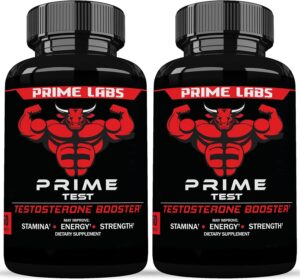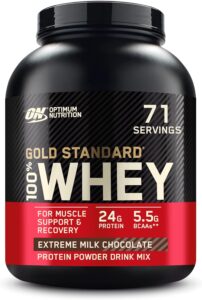
Ryan Gosling, known for his incredible versatility as an actor, has taken on various physically demanding roles throughout his career. For his role in “The Fall Guy,” Gosling underwent an intense workout and diet regimen to achieve the necessary physique. This article delves into the specifics of his workout plan and diet routine, providing a comprehensive look at how he prepared for this demanding role.
Ryan Gosling’s Biography
Ryan Thomas Gosling, born on November 12, 1980, in London, Ontario, Canada, began his career as a child actor on “The Mickey Mouse Club” alongside future stars like Justin Timberlake and Britney Spears. Despite challenges in school due to ADHD, Gosling found solace in performing arts. He transitioned to film with a breakthrough role in “The Believer” (2001) and gained massive popularity with “The Notebook” (2004). Known for his versatility, Gosling earned critical acclaim for roles in “Half Nelson” (2006), “Blue Valentine” (2010), “Drive” (2011), and “La La Land” (2016), the latter earning him his second Academy Award nomination. Beyond acting, he directed “Lost River” (2014) and is part of the band Dead Man’s Bones. Gosling has been in a long-term relationship with actress Eva Mendes, with whom he has two daughters. Committed to philanthropy, he supports animal rights and humanitarian causes. Balancing a private personal life with a dynamic career, Ryan Gosling continues to be a prominent figure in Hollywood.
Ryan Gosling’s dedication to his craft is evident in his physical transformations for different roles. For “The Fall Guy,” a film that promises high-octane action, Gosling had to get into peak physical condition. This involved a combination of strength training, cardiovascular exercises, and a meticulously planned diet.
The Workout Plan
- Strength Training
Strength training was the cornerstone of Gosling’s workout regimen. His plan focused on building muscle mass and strength, which are crucial for performing stunts and maintaining a rugged appearance.
Compound Movements: Gosling’s routine included compound exercises like deadlifts, squats, and bench presses. These exercises work multiple muscle groups simultaneously, promoting overall muscle growth and strength.
Isolation Exercises: To target specific muscles, Gosling incorporated isolation exercises such as bicep curls, tricep extensions, and leg curls. These helped in sculpting a well-defined physique.
Progressive Overload: The principle of progressive overload was essential. Gosling gradually increased the weight he lifted to continually challenge his muscles and stimulate growth.
- Cardiovascular Training
Cardiovascular fitness is vital for action roles to ensure endurance during physically demanding scenes.
HIIT (High-Intensity Interval Training): Gosling’s cardio routine included HIIT workouts. These sessions involved short bursts of intense activity followed by brief rest periods. HIIT is effective for burning fat and improving cardiovascular health.
Steady-State Cardio: In addition to HIIT, Gosling engaged in steady-state cardio like running, cycling, and swimming. These exercises helped in building endurance and maintaining a lean physique.
- Functional Training
To perform stunts and fight scenes, functional training was a significant part of Gosling’s regimen.
Bodyweight Exercises: Push-ups, pull-ups, and planks were integral to his routine. These exercises improve core strength and stability.
Plyometrics: Explosive movements like box jumps and burpees were included to enhance agility and power.
Mobility Work: Flexibility and mobility exercises, including yoga and dynamic stretching, were essential for preventing injuries and improving overall performance.
The Diet Routine
Caloric Intake and Macronutrient Balance
Gosling’s diet was meticulously planned to support his intense workout regimen.
- Caloric Surplus: To build muscle, he maintained a caloric surplus, consuming more calories than he burned. This surplus provided the necessary energy for muscle growth and recovery.
- Macronutrient Ratio: His diet was balanced in macronutrients, with a focus on protein to support muscle repair and growth. A typical macronutrient split was 40% protein, 30% carbohydrates, and 30% fats.
Protein Sources
Protein is crucial for muscle development, and Gosling’s diet included high-quality protein sources.
- Lean Meats: Chicken breast, turkey, and lean cuts of beef were primary protein sources.
- Fish: Salmon and tuna provided protein along with healthy omega-3 fatty acids.
- Plant-Based Proteins: To diversify his protein intake, Gosling included plant-based sources like beans, lentils, and quinoa.
Carbohydrates and Fats
Carbohydrates and fats were carefully chosen to provide sustained energy and support overall health.
- Complex Carbohydrates: Brown rice, sweet potatoes, and whole grains were preferred for their slow-releasing energy.
- Healthy Fats: Avocados, nuts, seeds, and olive oil were included to ensure a balanced intake of healthy fats, essential for hormone production and overall well-being.
Hydration and Supplements
Proper hydration and supplementation were crucial components of Gosling’s diet routine.
- Hydration: Drinking plenty of water was essential to stay hydrated, especially during intense workouts.
- Supplements: To complement his diet, Gosling used supplements such as whey protein, BCAAs (branched-chain amino acids), and multivitamins to ensure he met his nutritional needs.
Daily Routine Breakdown
Morning: Fasted Cardio and Breakfast
Gosling started his day with a fasted cardio session to boost his metabolism.
Breakfast typically included a protein shake, oatmeal, and fruits.
Mid-Morning: Strength Training and Snack
After breakfast, he focused on strength training.
Post-workout, he consumed a protein-rich snack like a Greek yogurt parfait with berries and nuts.
Lunch: Balanced Meal
Lunch was a balanced meal comprising lean protein, complex carbs, and healthy fats. An example meal would be grilled chicken, quinoa, and steamed vegetables.
Afternoon: Functional Training and Snack
Functional training sessions took place in the afternoon.
A mid-afternoon snack could include a smoothie with protein powder, spinach, banana, and almond milk.
Evening: Dinner and Mobility Work
Dinner included a lean protein source, vegetables, and a small portion of healthy fats. A typical dinner might be baked salmon with asparagus and a side salad.
Post-dinner, Gosling engaged in mobility work to ensure flexibility and aid recovery.
Before Bed: Light Snack
Before bed, he had a light snack, such as cottage cheese with sliced fruit, to fuel overnight muscle repair.
Ryan Gosling’s transformation for “The Fall Guy” is a testament to his commitment to his roles. His rigorous workout plan and disciplined diet routine were crucial in achieving the physical condition necessary for the action-packed film. By focusing on strength training, cardiovascular fitness, functional exercises, and a balanced diet, Gosling was able to build a physique that not only looked impressive but also performed exceptionally well in demanding scenes. His approach serves as an inspiration for anyone looking to transform their body and improve their fitness.
This comprehensive look at Gosling’s workout and diet regimen showcases the dedication and effort required to prepare for a physically demanding role, highlighting the intersection of fitness and film in achieving cinematic excellence.










